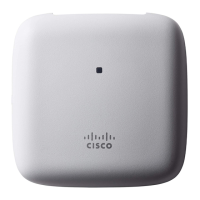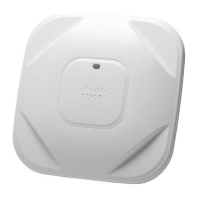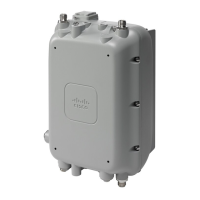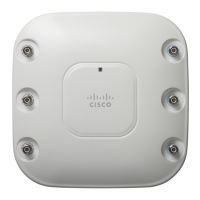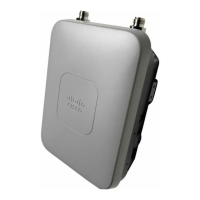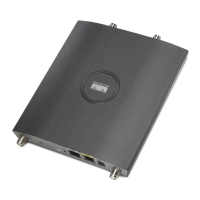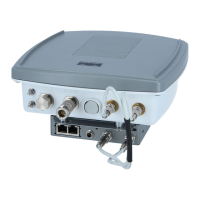Revised: January 25, 2017,
PoE Negotiation
When the AP negotiates 802.3at (high power), it always tries first to negotiate using Cisco Discovery Protocol (CDP). If the negotiation
fails, the AP will attempt to negotiate using Link Layer Discovery Protocol (LLDP). LLDP is a vendor-neutral method for advertising
device identity and capabilities.
So, the AP 1850 first uses CDP to get 20.9 W and reserve that amount of power. If CDP fails, the same process starts using LLDP.
So, a non CDP response time out (often approaching 60 seconds) would need to occur before the LLDP negotiation starts. In both
cases, the requirement is obtain 20.9 W power.
If the AP has enough power, it shows Full Power in the PoE settings. See Figure 15: Power over Ethernet showing Full Power Mode,
on page 21.
Figure 15: Power over Ethernet showing Full Power Mode
However, if the power source equipment such as PoE switch, mid-span, or injector lacks the ability to properly negotiate high power,
go to “ANY” mode and take whatever power the device can provide, which would likely be 15.4 W (802.3af).
If the power source is limited to 15.4 W (802.3af), then the AP negotiates and reserves 15.4 W.
The AP functions with the available power sourcing. If the power is not enough to be fully functional, then the AP makes an effort
to shut down and re-negotiate to be able to function at 15.4W. Also, the AP indicates LOW or MEDIUM power on the controller
and functions at reduced capability. See Table 1: Power over Ethernet options, on page 21.
If the power source does not support Cisco Discovery Protocol, for example third party switch, then
uncheck its usage. See Table 1: Power over Ethernet options, on page 21.
Note
Table 1: Power over Ethernet options
CapabilityPower Budget
1
Powering Options
Fully Functional19.93 W802.3at, Enhanced PoE, PoE+
Fully Functional19.93 WCisco Power Injector
AIR-PWRINJ4=(30 W)
Fully Functional19.93 WCisco Local Power Supply,
AIR-PWR-C=

